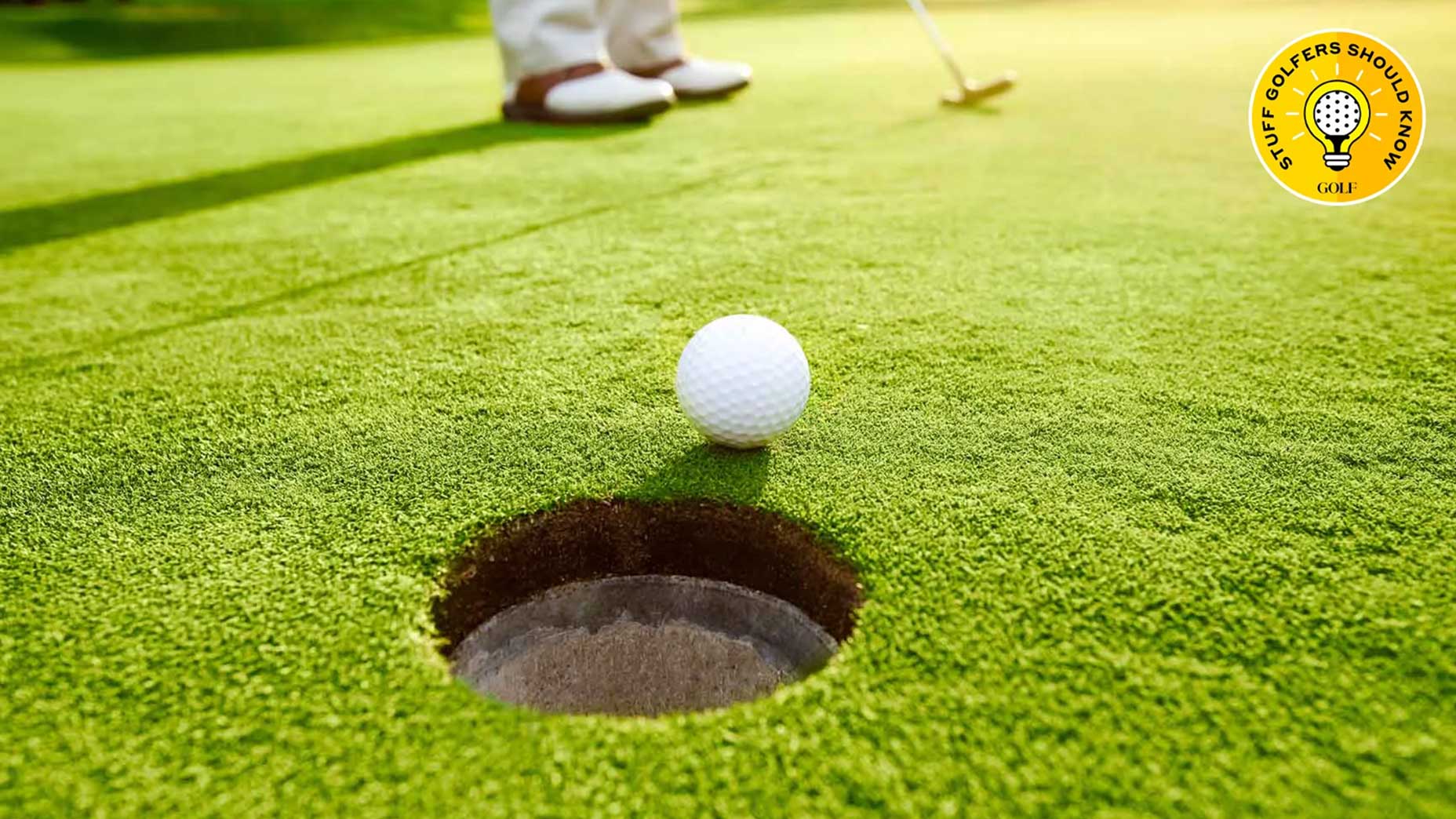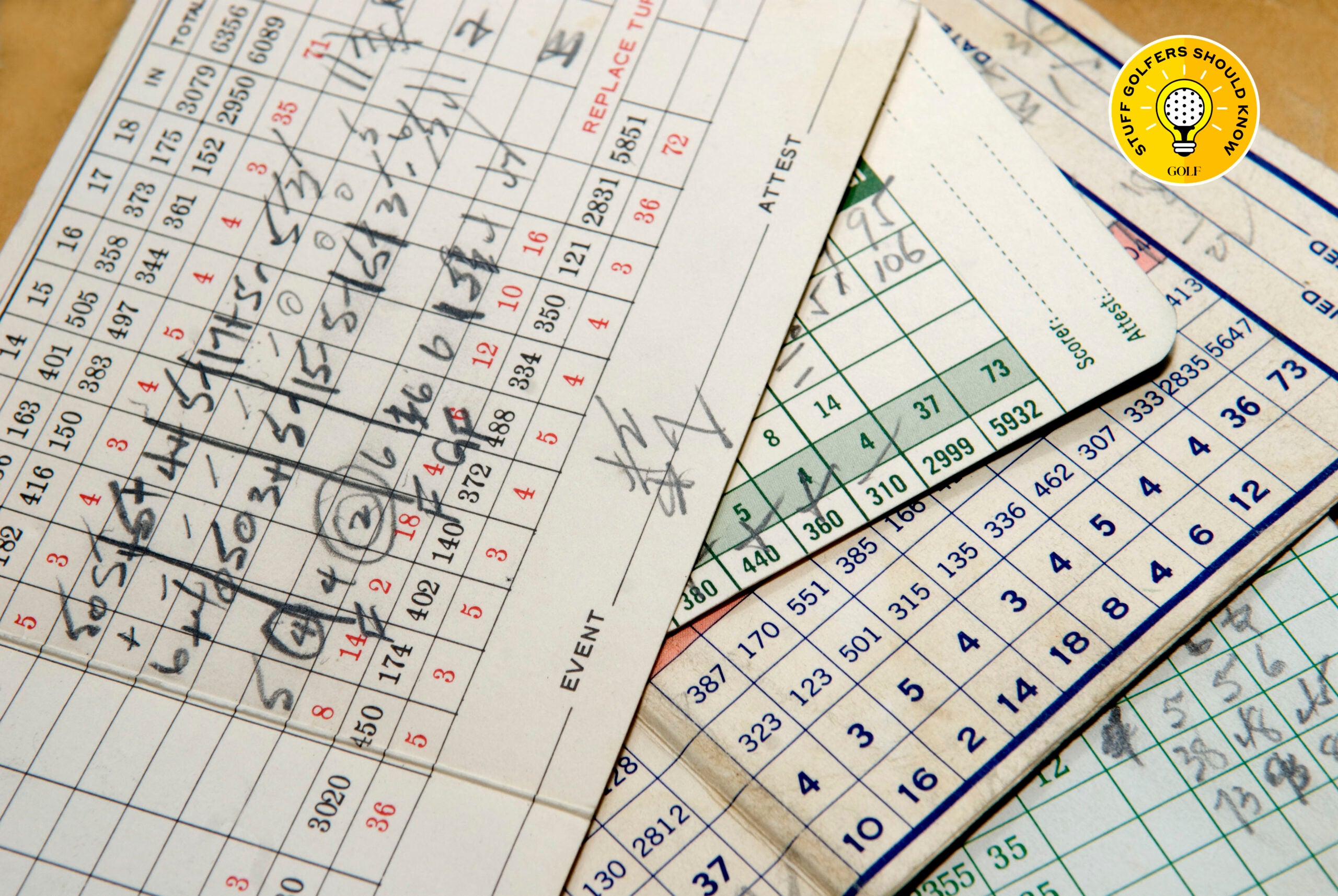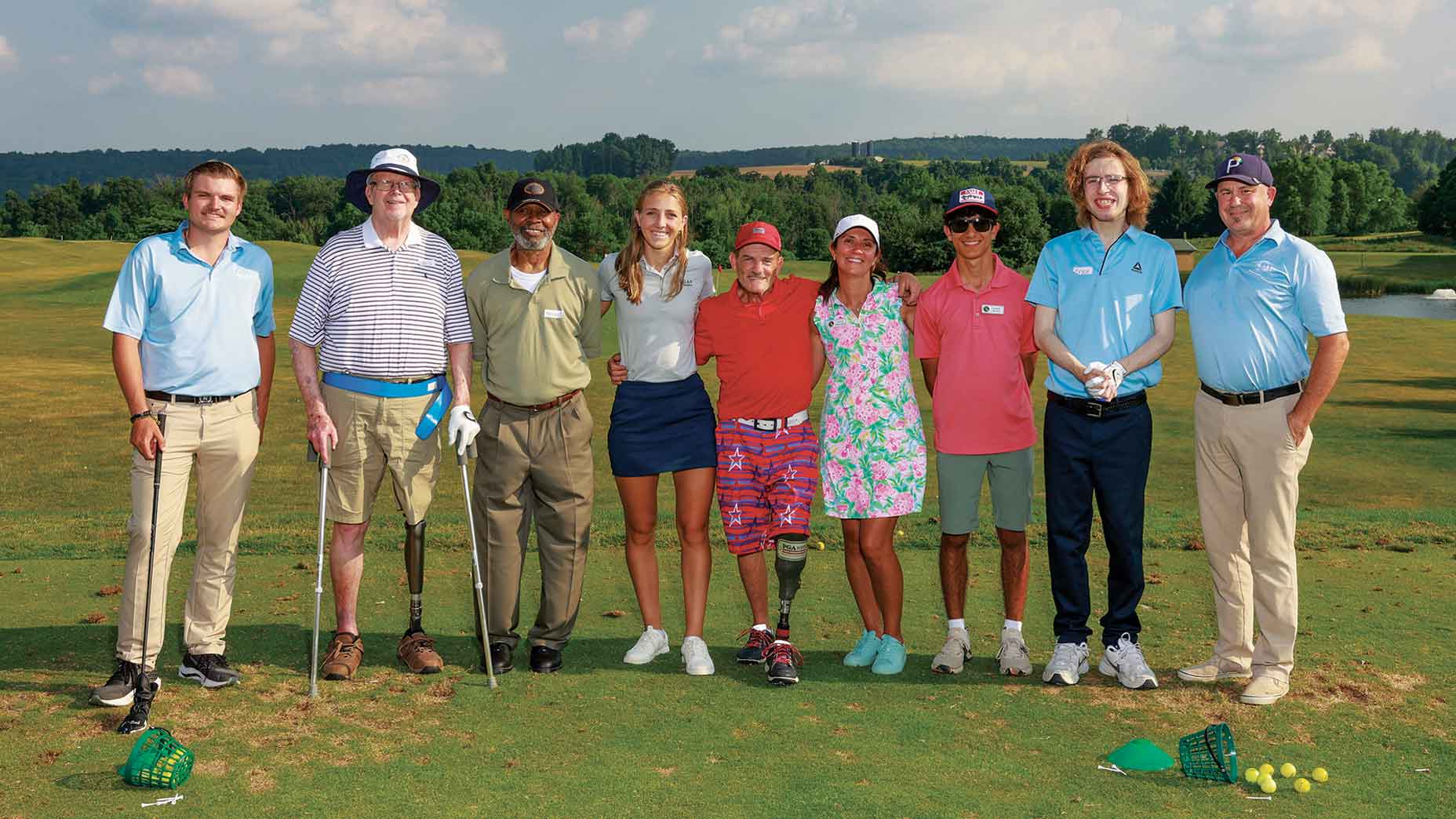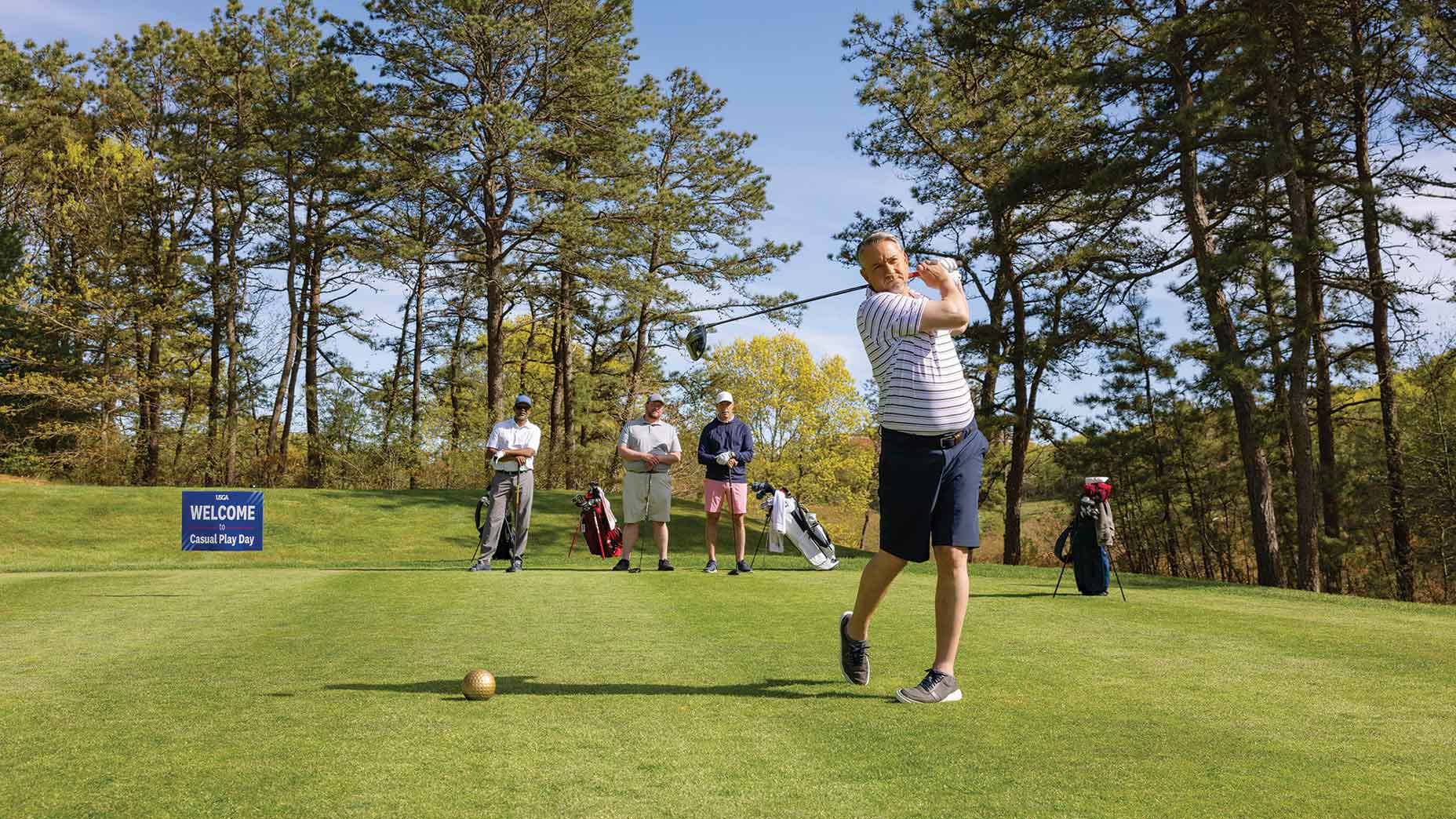A dummy’s guide to the brand-new golf ball rules
- Share on Facebook
- Share on Twitter
- Share by Email
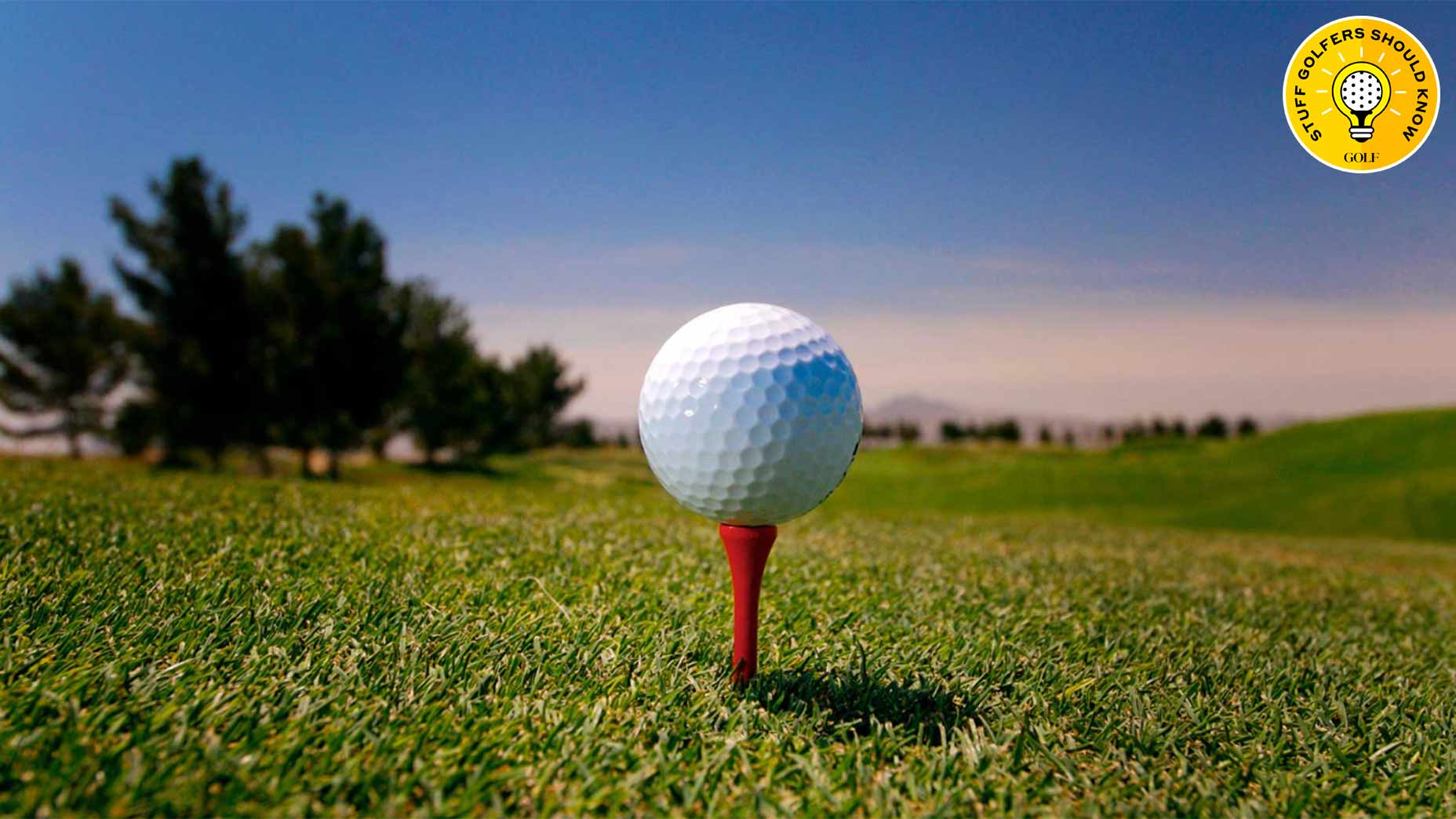
It's an interesting time to be a golf ball.
Getty Images
Welcome to Stuff Golfers Should Know, a GOLF.com series in which we reveal all kinds of useful golf (and life!) wisdom that is sure to make you the smartest, savviest and most prepared player in your foursome.
So, you’ve heard golf has some new proposed rule changes surrounding the golf ball. You’re curious, but you also don’t want to wade through something as mind-numbing as the “Distance Insight Report.”
Good news! I see you, I hear you and I would like to be here for you. Here’s my offer to help: An FAQ on the new golf-ball stuff, free of charge. I’ll do the asking and the answering to make this as easy on you as possible.
So, new golf ball rules. Who decides this stuff?
The United States Golf Association and the R&A — golf’s governing bodies. They’ve been working together on the proposal.
Okay, so what does the proposal say?
Basically it says they think elite golfers hit the ball too far. They want them to hit it a little bit shorter.
Why too far?
The way top pros have played golf courses has changed quite a bit over the years. As pros hit longer drives, they need the courses to lengthen to keep up — otherwise the game changes dramatically. Longer courses require more water, more maintenance, more money. Golf’s governing bodies don’t want courses to have to keep expanding; they want them using fewer resources, not more.
Got it. How much shorter will pros hit it under this new rule?
Roughly five percent shorter, though that’ll vary based on the individual. But if Jordan Spieth hits a tee shot 300 yards right now, expect it to travel about 285 yards with a new ball. The change is expected to be in that 15-yard window.
That doesn’t really seem like that big a difference.
I’m with you there. It’s not a huge difference. The governing bodies were in a bit of a pickle here: Make too big a change and people are more likely to reject it. Make too small a change and you’re not making a difference.
Wait, so who does this rule apply to, anyway?
Just players in “elite competitions,” according to the proposal. They made it clear they don’t want amateur golfers to worry about hitting it shorter than they already do.
How do you define “elite competition?”
That’s not totally clear. It’s designed as an “optional” rule, so it could be event by event, but the USGA/R&A definitely hopes every pro tour will adopt the proposal after a period of feedback. In other words, they want the PGA Tour to use the new ball. They want the DP World Tour to use the new ball. They want the NCAA to use the ball, too — USGA chief Mike Whan touched on that. But where do you draw the line? Club championships? Mid-ams? Four-balls with scratch golfers? That part feels like it’s going to be messy.
What the hell is “bifurcation” and why do I keep hearing that word?
It literally means the division of something into two parts. In golf it means creating a separate set of rules for the pros versus everyday amateurs.
Is that what’s happening here?
Yeah, basically. They didn’t quite say it outright, calling it an “option” for events — but this is bifurcation.
Why is that controversial?
One cool thing about golf is that everybody plays the same rules and the same equipment. The game has built-in modifications, like different tees and handicaps, but the pros play basically the same stuff as the amateurs and under the same rules. This would change that principle.
Hmm. I guess so. So why not change the rules for everybody?
Good question. After getting feedback from people in golf they decided it would be bad optics to tell amateurs they were suddenly about to hit it shorter. Golf is hard enough, after all. And it’s hard to get into. So they decided not to change things for those players.
I’m thinking of some problems.
Oh boy. Whatchu got?
Well, players are getting longer, right?
Yeah. The USGA said pro tours got four percent longer just this year!
So are we going to be right back in this spot in a few years?
Great question. Some manufacturers would tell you that current restrictions have already basically capped the equipment; pros will keep hitting it longer because they swing harder than ever, but there’s a limit to that.
But if they do keep hitting driver farther, then yeah. The USGA mentioned we might be back here in 10-15 years — and then we’ll have to make another similar change.
Oof.
Yeah.
Okay, another problem. This is meant to keep courses from expanding, right?
Yeah, partly.
But it’s only for elite competitions?
Yes.
How would golf-ball manufacturers make a shorter ball, anyway? Here are 3 waysBy: Ryan Barath
So how big a difference is it really making for courses?
Well, it means that pro events can continue to be held at the courses they’re currently at. I think there’s a legitimate concern that to make courses difficult for pros, they need to push these courses to the edge. Rock-hard greens, hole locations in corners, that sort of thing. They make ’em borderline unfair to keep scoring in check.
That doesn’t answer my question at all.
Oh, yeah. I see your point — this is mostly just affecting courses that host elite competitions.
What do the people who make golf balls think?
They don’t seem super excited about it. This means a lot of R&D for them if they want to keep making balls for professionals. And then they won’t even be able to sell those balls to everyday joes? That’s not a great proposition. Titleist has been the most vocally opposed to it. They called it “a solution in search of a problem.”
Ouch.
Yeah.
What do the pros think?
I’m interested to see. The few I talked to yesterday, before the announcement came out, were pretty opposed to the idea. That makes sense; they’ve gotten to the top of the sport playing golf balls built under certain parameters and if those suddenly change, they’ll have to adjust. They’re also used to getting sponsorship deals for playing equipment that can be sold to amateurs; bifurcation disrupts that, too. And now they’ll hit it shorter, too? Potentially shorter than their big-hitting amateur buddies? I don’t see this getting a ton of positive reception at first.
But Padraig Harrington was an interesting supportive voice. I’m curious what other thoughtful feedback will emerge from this.
If they don’t like it, what can they do about it?
Well, there is the possibility that leagues like the PGA Tour could just ignore it.
Seriously?
Yeah. The PGA Tour has generally followed the USGA’s lead on rules. But because this is considered “optional,” they could just say thanks, but no thanks.
So different tours and tournaments could have different rules?
That’s the messiest scenario. You could imagine the PGA Tour ignoring the changes but the U.S. Open and Open Championship adopting them. That would lead to chaos. It would lead to pros learning a brand-new ball for major championships. It would change the nature of the competition. I don’t think that’s something to root for unless you like to watch the world burn — or you’re hungry for more power struggles in golf. But it’s not out of the question.
Woof. And I thought the LIV stuff was confusing.
Golf drama everywhere, these days.
Okay, dorky question. How do you make a ball go shorter, anyway?
Oh, now we’re getting into it. I’m not a huge gear guy, but here’s how I understand it. The USGA tests balls with a robot and if your ball flies more than 317 yards (plus or minus three yards) it fails the test. Under the old test, that robot swung 120 mph. Under the new proposed test, the robot will swing 127 mph and have better spin and launch numbers.
The robot’s getting better?
Yes. Just like the golfers!
Hmm.
In other words, the ball can’t be as efficient at traveling 317 yards. Because the robot’s swinging faster, the ball has to react slower. It’ll be softer as a result.
That actually makes sense, now that I’ve read it twice.
Good! Anything else?
What do you think of all of this?
Me? I’m trying to keep an open mind. But I’m not sure they’ve nailed it with this one.
Let’s start here. If they’ve decided this is a big-time problem — and it sounds like they have — is limiting a tiny subset of golfers by five percent really doing enough? I wrote this in our roundtable, too, but if distance is golf’s version of climate change, this response risks becoming the plastic straw ban. Not drastic enough to make a big difference but drastic enough to be annoying and confusing and upset plenty of people in the process.
Look, I recognize the need to limit distance and I like to see the pros tested. I also don’t love the idea of bifurcation; it seems completely unnecessary. If they’re set on a rollback, I would like to see a significant rollback for every golfer. Let’s keep this consistent and let’s keep it as simple as possible.
But I’m confused by all of this, because I’m also intrigued by the idea that nothing really needs to be done. Sure, guys will continue to hit it longer, at least for a few more years. But we’re seeing a potential point of diminishing returns as pros max out on ball speed. Even Bryson DeChambeau acknowledged there’s a point where it doesn’t help all that much to hit it harder — the dispersion is impossible to control. Some experts I’ve talked to see roughly 190 mph ball speed as that point. So, yeah, maybe there is a logical end point to this stuff if we just hold tight and don’t change everything.
There’s also a part of my brain that wonders about making significant changes in a simpler way. I joked on Twitter about eliminating golf tees, but I’m getting weirdly attached to that idea. And big-picture I can’t help but think how absurd it is that guys can fly driver, like, 1000 feet. That leads to an insane amount of wasted space. Maybe the longest players on the planet should be hitting it, like 160 yards instead?!
In other words, I still have a lot to sort through. Sounds like the rest of the golf world does, too.
I think I’m even more confused than when I started.
Sorry. But thanks for making it this far, anyway.
Latest In News

Dylan Dethier
Golf.com Editor
Dylan Dethier is a senior writer for GOLF Magazine/GOLF.com. The Williamstown, Mass. native joined GOLF in 2017 after two years scuffling on the mini-tours. Dethier is a graduate of Williams College, where he majored in English, and he’s the author of 18 in America, which details the year he spent as an 18-year-old living from his car and playing a round of golf in every state.


